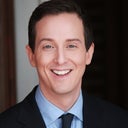I am a 32B and so is my friend but why do her breasts appear bigger in the same swimsuits I wear?
Answers (10)
From board-certified doctors and trusted medical professionals
More Breast Augmentation Questions
See all Breast Augmentation Q&AWE SEND PRETTY
EMAILS
What’s trending? Who’s turning heads? Which TikTok myths need busting? We’ve got you. No fluff, no gatekeeping—just real talk. Get our free, unfiltered newsletter.

